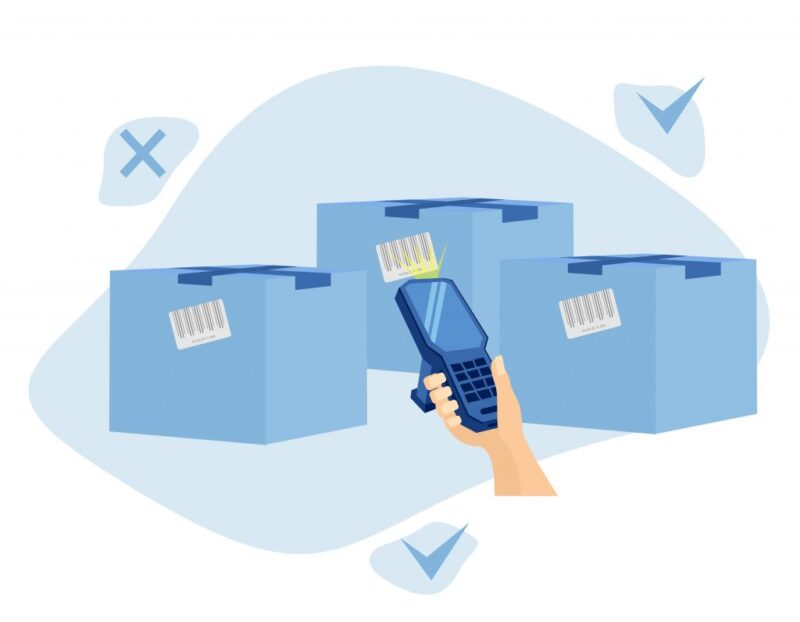RFID technology is a revolutionary innovation for supply chain management. It is essential for the modern world, where speed, connectivity, and globalization are key. Businesses need to track assets, manage inventory, and improve operations with precision and effectiveness. RFID is the perfect solution for these challenges.
What is the Purpose of RFID in Supply Chain Management?
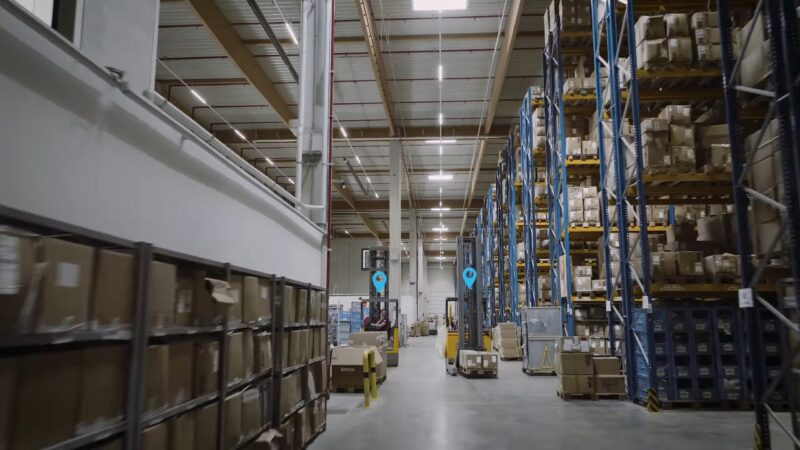
RFID technology utilizes electromagnetic fields to automatically identify and track tags attached to objects. In supply chain management, this translates to unprecedented visibility and control over assets. The first purpose of RFID in this context is real-time tracking.
Unlike traditional barcoding systems, RFID doesn’t require line-of-sight scanning. This means items can be tracked as they move through various stages of the supply chain, from manufacturing to distribution to retail.
Real-time data on the location, condition, and movement of products leads to more informed decisions and responsive management. Another key purpose is inventory management. With this system, inventory counts can be automated, reducing manual errors and labor costs.
This automation enables more frequent and accurate inventory counts, leading to better stock management and reduced overstock or stockouts. The technology’s ability to handle bulk scanning further streamlines inventory processes, allowing for quick audits of large numbers of items.
Main Benefits
RFID in supply chain management offers numerous benefits:
- Improved Accuracy: Manual data entry is prone to errors. RFID automates data collection, significantly reducing errors and enhancing data reliability.
- Increased Efficiency: The speed of scanning surpasses traditional methods, allowing for faster processing of goods. This efficiency is vital in high-volume environments like warehouses and distribution centers.
- Enhanced Visibility: It provides detailed visibility of goods throughout the supply chain. This visibility aids in better forecasting, planning, and response to supply chain disruptions. You can use the same system for other areas in your company, such as monitoring employees.
- Asset Tracking: Beyond inventory, RFID is instrumental in tracking returnable assets like pallets and containers, ensuring they are efficiently used and returned.
- Theft Reduction and Security: Tags can trigger alarms if goods are removed from a location unauthorized, adding a layer of security against theft.
How To Implement RFID in the Supply Chain Management?
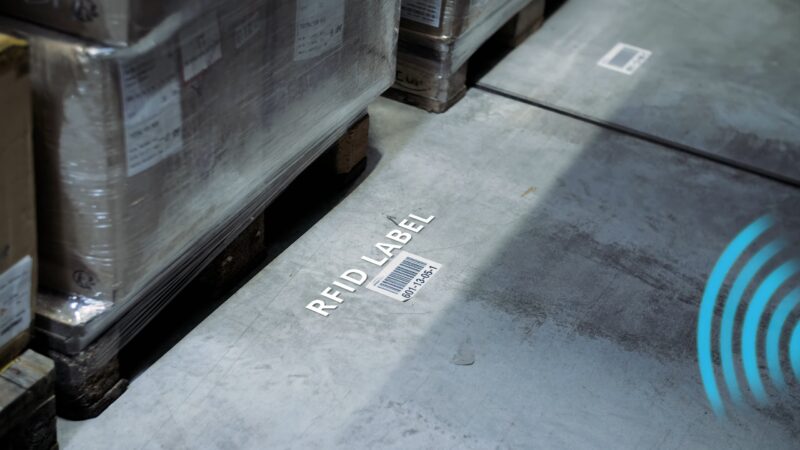
Implementing it in supply chain management requires strategic planning and consideration of various factors:
- Assess Needs and Set Objectives: Identify specific areas where RFID can add value. Set clear objectives for what you aim to achieve with the technology.
- Choose the Right Type of System: There are different types of systems (passive, active, and semi-passive). Select one that aligns with your operational needs and budget.
- Integrate with Existing Systems: Ensure the system integrates seamlessly with your existing supply chain management software for smooth data flow and analysis.
- Pilot Testing: Before a full rollout, conduct a pilot test in a controlled environment to identify any potential issues and adjust the implementation plan accordingly.
- Training and Change Management: Train staff on the new system and manage the change process to ensure a smooth transition and adoption.
- Ongoing Evaluation and Optimization: Continuously monitor the system’s performance and make necessary adjustments to optimize its efficiency and effectiveness.
RFID Compared to Other Options Used in Supply Chain Management
When evaluating its role in supply chain management, it’s crucial to compare it with other technologies. Common alternatives include barcodes, QR codes, and IoT sensors. Each option has its strengths and weaknesses, making them suitable for different scenarios.
vs. Barcodes
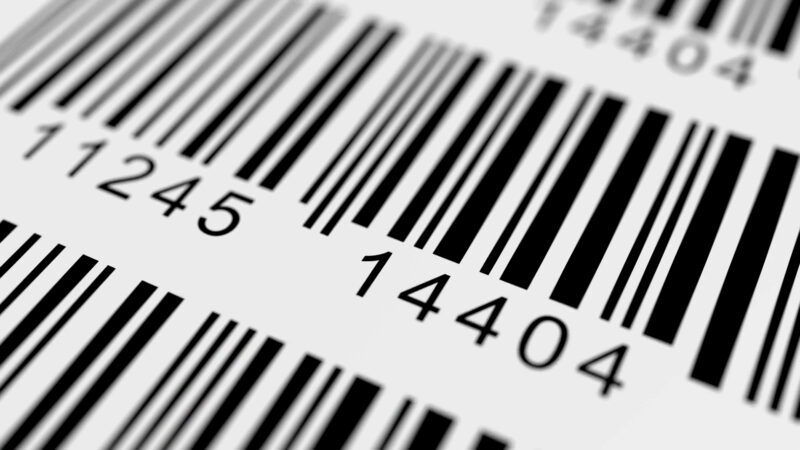
Barcodes are the most traditional method of tracking in supply chains. They are cost-effective and widely adopted. However, they require line-of-sight for scanning, which limits their efficiency in large-scale operations. RFID, on the other hand, can scan multiple items simultaneously without direct line-of-sight, significantly speeding up the process.
vs. QR Codes

QR codes are similar to barcodes but can store more data. They are becoming popular due to their ability to be scanned by smartphones. While QR codes offer some advantages over traditional barcodes, they still require line-of-sight and cannot handle bulk scanning like RFID.
vs. IoT Sensors
IoT sensors offer advanced tracking capabilities, providing real-time data on not just the location but also the condition of the items (temperature, humidity, etc.). While IoT offers more detailed data, it is often more expensive than RFID and may be overkill for basic tracking needs.
| Feature | RFID | Barcodes | QR Codes | IoT Sensors |
|---|---|---|---|---|
| Cost | Higher | Lower | Low | Higher |
| Line-of-Sight Requirement | No | Yes | Yes | Varies |
| Bulk Scanning | Yes | No | No | No |
| Data Capacity | Medium | Low | Medium | High |
| Real-Time Tracking | Yes | No | No | Yes |
| Durability | High | Low | Medium | High |
| Environmental Suitability | Varies | Low | Medium | High |
| Implementation Complexity | Medium | Low | Low | High |
Will It Remain Relevant in the Future?
In a world where technology evolves rapidly, it’s essential to consider the future relevance of this system in the supply chain management. While new technologies emerge, RFID’s unique capabilities ensure its continued importance in the industry. The flexibility, efficiency, and scalability make it adaptable to future developments.
Impact of New Technologies on RFID
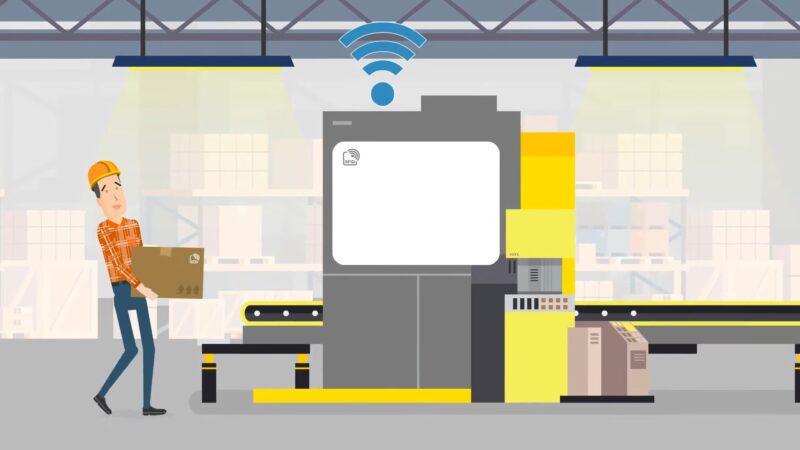
Emerging technologies have the potential to enhance or transform the way RFID is used in supply chains:
- Integration with Blockchain: Blockchain technology can provide a new level of security and transparency to RFID-enabled supply chains. By storing data collected from RFID tags on a blockchain, businesses can create an immutable record of transactions and movements, enhancing traceability and trust.
- Advancements in AI and Machine Learning: AI and machine learning can leverage the data collected by RFID to optimize supply chain processes. Predictive analytics can foresee supply chain disruptions, while AI algorithms can make real-time decisions for inventory management.
- 5G Connectivity: The rollout of 5G networks will enhance RFID’s capabilities in real-time data transmission, allowing for more responsive supply chain management. Higher data speeds and reduced latency will improve the efficiency of RFID systems.
- IoT Integration: While RFID is a part of the IoT ecosystem, further integration with IoT devices can expand its capabilities. Combined with sensors and smart devices, RFID can offer more comprehensive monitoring and management solutions.
Advanced Systems and Their Integration
The potential for RFID to integrate with advanced supply chain management systems is significant, enhancing capabilities across various aspects of the supply chain.
Advanced Analytics & Big Data

RFID provides the foundational data needed for these systems to analyze and interpret. This data includes real-time inventory levels, product movements, and supply chain bottlenecks. When combined with big data analytics, this information can be used to forecast demand more accurately, optimize routing and supply chain operations, and improve overall inventory management.
Edge Computing
The integration with edge computing can greatly enhance the speed and efficiency of data processing in supply chains. Tags collects data at various points – warehouses, distribution centers, and during transit. Edge computing processes this data locally, reducing latency and allowing for quicker decision-making. This setup is particularly beneficial in time-sensitive environments where rapid responses are crucial.
Smart Contracts
Smart contracts, powered by blockchain technology, can be significantly enhanced by integrating RFID. When tags are scanned at various checkpoints, this data can trigger smart contracts to execute specific actions like payments, transfer of ownership, or updating inventory records. This automation streamlines supply chain transactions, improves accuracy, and increases efficiency.
Sustainability Tracking

As environmental sustainability becomes a priority in supply chains, Tagging can play a crucial role. By tracking products throughout their lifecycle, tags can provide valuable data for sustainability tracking technologies. This data assists in monitoring and managing carbon footprints, waste reduction, and sustainable sourcing practices.
3D Printing
In industries where 3D printing is reshaping supply chains, RFID can be an invaluable tool for tracking the movement and usage of printed parts. It ensures inventory accuracy, particularly in environments where on-demand production is prevalent, thereby reducing excess inventory and streamlining the supply chain.
Collaborative Robots
Cobots can significantly boost efficiency in warehouses and production lines. Cobots equipped with readers can identify and handle tagged items, enhancing tasks such as sorting, picking, and inventory management. This collaboration reduces labor-intensive tasks and improves operational accuracy.
Predictive Maintenance
Combined with IoT sensors and AI, can transform predictive maintenance in supply chains. RFID can track the usage and movement of equipment, while IoT sensors monitor their condition. This data, analyzed through AI, can predict equipment failures before they occur, minimizing downtime and maintenance costs.
FAQs
What is the role of RFID technology in supply chain risk management?
RFID technology helps reduce supply chain risks by tracking and securing goods and assets in real time. RFID also helps deal with disruptions faster and more accurately.
Is RFID still used today?
Yes, RFID is still widely used today in many industries, such as retail, healthcare, manufacturing, logistics, and more. RFID offers many benefits, such as improved inventory management, faster processing times, enhanced security, and better customer service.
What is the future of RFID in supply chain?
The future of RFID in supply chain is promising, as the technology will grow and evolve in the coming years. Some of the trends and innovations that will shape the future of RFID are flexible printing options, integrations with other technologies, new antenna designs, and smart-sensing capabilities.
Why is RFID important in logistics?
RFID is important in logistics because it improves the efficiency, accuracy, and reliability of logistics operations. RFID helps track and monitor the location, condition, and status of goods and vehicles throughout the logistics network.
What technology would replace RFID in the future?
There is no definitive answer to what technology would replace RFID in the future, as RFID is still a relevant and useful technology for many applications. However, some of the possible alternatives or competitors to RFID are Bluetooth Low Energy (BLE), Ultra-wideband (UWB), Wi-Fi, and Near Field Communication (NFC). These technologies have different advantages and disadvantages, depending on the use case and requirements.
Summary
The future of supply chain management is undoubtedly marked by technological integration and innovation. As businesses continue to navigate an ever-evolving landscape, the role of RFID and its synergy with emerging technologies will be key in driving efficiency, sustainability, and adaptability in this critical sector.
